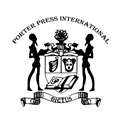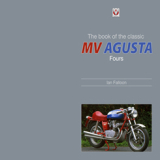Úvod »Automobily nákladní a tahače»Diamond » MV Agusta Fours Performance Portfolio 1967-1980
Anotace
| Vazba: | Brožovaná | ||
| Počet stran: | 140 | ||
| Rozměry v mm: | 210 x 280 | ||
| Počet obrázků: | 250 | ||
| Rok vydání: | 2009 | ||
Count Domenico Agusta built motorcycles in order to dominate motorcycle racing. Inheriting and developing a successful aviation business before the Second World War, in the post-war years he sought a more controllable market in which to excel. Agusta had the resources to build world-beating competition motorcycles, and so he did. If these championship winners also happened to establish a brand which could be sold, at a profit, to the man in the street then that was all to the good – but it was on the racetrack that the marque made its name. As a result the machines built by MV (Meccanica Verghera) Agusta were created to dominate their sporting competitors, so they were frequently innovative and occasionally extreme. The road-going offshoots tended to be less well endowed; they might have come equipped with the name but they didn't always possess the attributes which made the racings MVs so remarkable. And remarkable is the right word for MV Agusta's racing record. The company withdrew from competition in 1976, taking with it some 4000 race wins, 270 Grand Prix wins, 75 world titles and a place in the Guinness Book of Records. For nearly 20 years MV Agusta had been THE Italian racebike, carrying every famous name in the business to victory – Bill Lomas, John Surtees, Phil Read and Mike Hailwood among them. At the last, Giacomo Agostini flew the flag for the marque in fine style at the Nurburging in 1976, winning with his usual crowd-pleasing panache. The competition success came at a price for it drained the family finances, and the modest sales of spin-off streetbikes couldn't cover the costs. In latter years the MV Agusta brand has been re-established as a part of the modern Italian industry and has wowed the crowds once again with the new F4. But in this book we are more concerned with the motorcycles which made post-war racing history. Bikes like the TT-winning 500-4, for these are the ones which led to the development of such sought-after roadsters as the 105mph dohc 600-4; the extraordinarily slim, 125mph 750S; the Boxer (a 955cc straight four, by the way, which lost its claim to that name when Ferrari objected!); and the 75bhp, 130mph 750S America. Although the roadbikes never quite managed to tame the potential of the racers, they were still extremely special. Not everyone can own an MV Agusta. When new, a 750 would cost roughly twice as much as an equivalent mass-produced motorcycle from Japan. Today, an MV is still an expensive beast to purchase and to run. But if we can't all own one, well, we can at least dream. This book of 26 articles sourced from the leading motor cycling publications of the day cover road & comparison tests & new model intros.
Models covered: 600, 750, 750 Sport, 750 Sport America & 850 Monza. 120 pages. 200 b/w & colour illus.

























